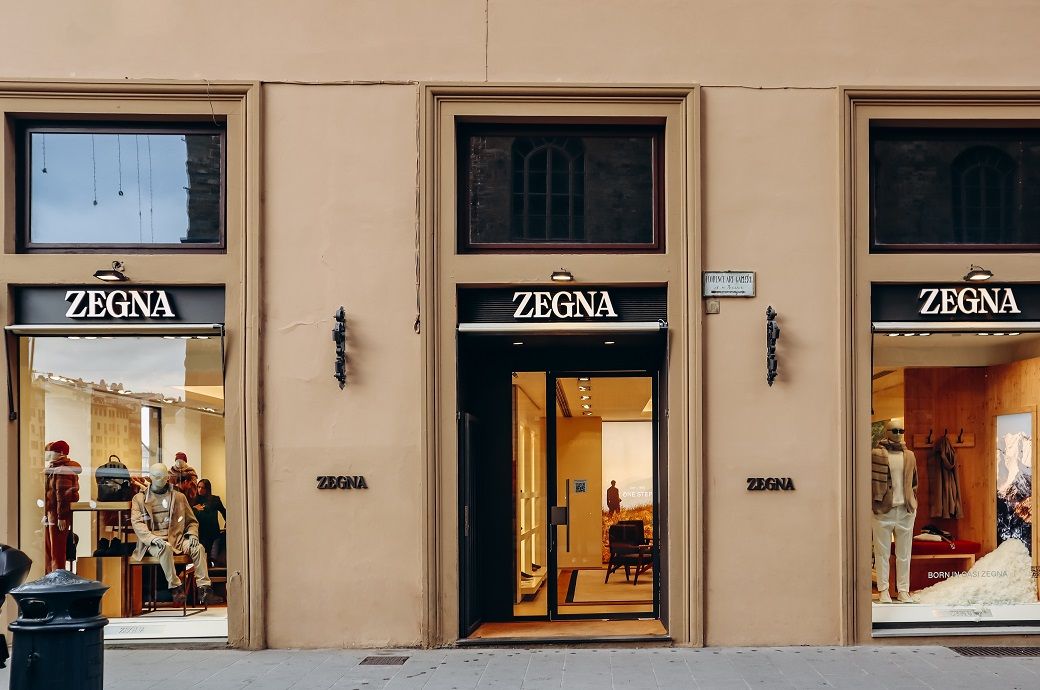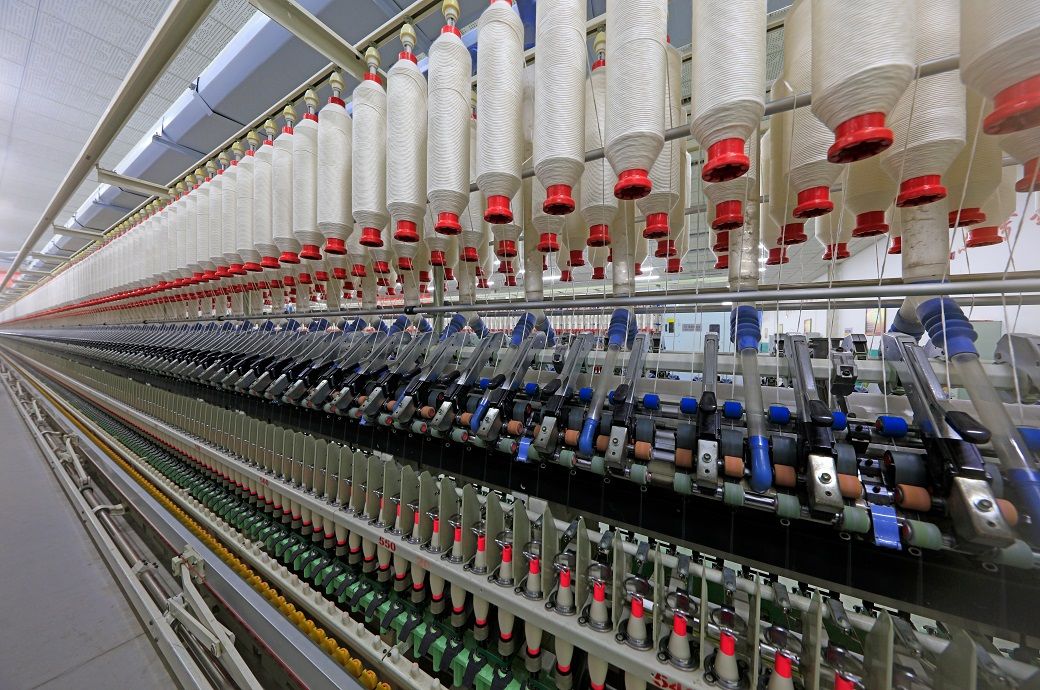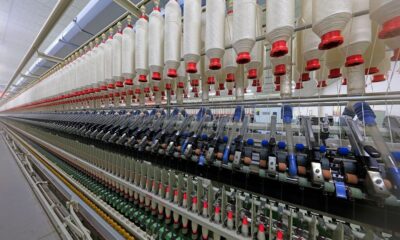Fashion
Proenza Schouler names Diotima’s Rachel Scott as new creative director

Published
September 2, 2025
Proenza Schouler has appointed Rachel Scott, the founder and designer of Diotima, as its new creative director, the New York house announced on Tuesday, a decision that is sure to be well-received.
Scott’s inaugural presentation as creative director for Proenza Schouler will debut in February 2026 with the Fall/Winter 2026 collection, marking a new chapter for the brand.
Scott actually joined Proenza Schouler as a consultant earlier this year, working closely with the design studio to shape the brand’s creative evolution. The Spring/Summer 2026 collection, developed through this collaborative partnership, “serves as an opening statement and an intimate preview of her perspective, one that will continue to unfold in the seasons ahead,” the Manhattan marque added.
Long recognized as a brand synonymous with craft and New American luxury, Proenza Schouler will enter a new chapter with Scott at the helm. Rachel brings a global design perspective, vast technical knowledge, and a distinctive new voice that aligns seamlessly with Proenza Schouler’s brand DNA, the brand underlined.
“As one of the most celebrated design talents of today, Rachel brings a fresh and female perspective to a brand built on the spirit of the modern American woman. Her profound understanding of Proenza Schouler’s brand codes, paired with her exceptional ability to marry craft with innovation, made her the natural choice to lead the brand forward,” said Proenza Schouler CEO Shira Suveyke Snyder in a release.
Scott succeeds the Proenza Schouler founding partners Lazaro Hernandez and Jack McCollough, who quit the house after two decades this year to move to Paris and become the joint creative directors of Loewe, taking over from Jonathan Anderson after he left to become the creative director of sister LVMH brand Dior.
“It is with great excitement that I join Proenza Schouler, a brand at the heart of American fashion, and one I have long admired. I hold deep respect for the beauty and world Jack and Lazaro so brilliantly crafted, and I look forward to bringing my perspective in dialogue with their legacy. I am grateful to Shira for her trust, and I am honored to step into this role to envision the next chapter of Proenza Schouler,” Scott enthused.
Scott, a 41-year-old designer, was born in Jamaica and is often said to approach fashion via language – blending in elements of French existentialism and post-structuralism. In a 16-year career, she has worked in Milan, with a stint at Costume National, and in New York, where she founded Diotima in 2021. She has since gone on to win considerable critical acclaim and a certain cult status for her adventurous collections.
“When we left Proenza Schouler last January, we knew the story would go on, but not yet who would write the next chapter. Rachel is someone whose work we have always admired. Her trajectory over the last few years has been impressive to watch. As founders and board members of the company, we are proud to welcome her to this very special brand and excited to see how she will embrace and evolve the legacy and spirit of what we started,” said Hernandez and McCollough in the press release.
Copyright © 2025 FashionNetwork.com All rights reserved.
Fashion
Italy’s Ermenegildo Zegna Group unveils new leadership structure

Ermenegildo “Gildo” Zegna, currently Group Chairman and CEO, will assume the role of Group Executive Chairman. In this capacity, he will focus on safeguarding the legacy and integrity of the Group’s three brands—ZEGNA, Thom Browne, and TOM FORD FASHION—while continuing to drive long-term value creation. He will also retain oversight of the Group’s Textile Division, the Group General Counsel’s office (including Internal Audit), and the External Relations department, which encompasses Sustainability, Investor Relations, and Corporate Communications.
Ermenegildo Zegna Group has announced a new leadership structure effective January 1, 2026.
Gildo Zegna will become group executive chairman, focusing on brand legacy and key corporate areas.
Gianluca Tagliabue will be appointed group CEO, while Edoardo and Angelo Zegna will become co-CEOs of the Zegna brand, leading brand strategy, product, and commercial performance.
Gianluca Tagliabue, currently Group Chief Financial Officer and Chief Operating Officer, will assume the role of Group CEO subject to shareholders’ approval. Working in close partnership with the Group Executive Chairman, Mr. Tagliabue will be responsible for shaping and executing the Group’s long-term strategy, driving business performance across all brands, and further strengthening the integration of the Group’s corporate functions. He will also oversee manufacturing operations. The CEOs of the Group’s brands will report to him. Gian Franco Santhià, currently Group Control & Chief Accounting Officer, will be appointed as Group CFO, reporting to the Group CEO.
Edoardo and Angelo Zegna, members of the fourth generation of the Zegna family, will be appointed Co-CEOs of the ZEGNA brand. They will succeed Gildo Zegna, who has held this role for over 20 years. Edoardo Zegna, currently Chief Marketing and Digital Officer of ZEGNA as well as Group Chief Sustainability Officer, will lead all aspects of brand strategy, from brand image to marketing, and, together with ZEGNA’s Artistic Director Alessandro Sartori, design matters, including store design. Angelo Zegna, currently CEO of ZEGNA’s EMEA region and Global Client Strategy Director, will oversee product development, merchandising, and commercial strategy, driving performance across markets and channels.
Gildo Zegna, Chairman and CEO of the Ermenegildo Zegna Group, commented: “I am proud and excited about today’s announcement. One of the most important responsibilities of a leader is to think ahead—to prepare for the future and empower the next generation of leadership. This belief has always been deeply rooted in our family values and is a key force behind today’s announcement.
Together with the Board, I have asked Gianluca Tagliabue to assume the role of Group CEO. Over the past decade, Gianluca has been a cornerstone of our Group, leading the company through key transformations. The Ermenegildo Zegna Group is a custodian of authenticity. Gianluca embodies this philosophy and will support the CEOs of our brands in pursuing the Group’s mission as a trusted and forward-looking guide.
Edoardo and Angelo’s complementary strengths and clear vision will make them a highly effective team to lead ZEGNA brand. They continue the family legacy and have demonstrated their business leadership over the past years. Together, they will not only carry forward the brand’s timeless heritage, but strengthen it further.
As Executive Chairman, I will stand alongside our new leadership team and all our colleagues — a curious and passionate custodian of our brands’ vision and values, as I have always been. I will also continue to oversee the Group’s textile platform — where it all began. I am looking forward to shaping our Group’s next chapter with this new leadership team.”
Note: The headline, insights, and image of this press release may have been refined by the Fibre2Fashion staff; the rest of the content remains unchanged.
Fibre2Fashion News Desk (RM)
Fashion
Canada’s suit imports fall in Jan-Aug as casualwear demand rises

Import volumes mirrored the same trend. Canada imported *.*** million units in the first eight months of ****, down from *.*** million units in the same period of ****. The average landed price dipped further to $**.** per suit, marking a cumulative decline of nearly ** per cent since ****, when the average stood at $**.** per unit, according to *fashion.com/market-intelligence/texpro-textile-and-apparel/” target=”_blank”>sourcing intelligence tool TexPro. Retailers have been moving towards lower-value assortments as consumers prioritise affordability, prompting sourcing shifts to cheaper origins and lower-spec tailoring.
The price reduction suggests increased competition, lower unit-value buying, and retailers favouring budget sourcing channels rather than premium tailoring suppliers—a response to elevated inventory pressures, cautious buying cycles, and slower store traffic for formalwear categories.
Fashion
How spinning sector strain is putting Bangladesh’s RMG might at risk

Bangladesh’s spinning sector is reportedly facing severe pressure from soaring costs, volatile cotton prices, and a surge in cheap yarn imports, even as industry leaders warned of potential shutdowns, risking millions of jobs.
In view of the existing scenario, stakeholders sought urgent support—gas price cuts, incentives, and anti-dumping measures to stabilise the sector.
Source link
-

 Tech4 days ago
Tech4 days agoGet Your Steps In From Your Home Office With This Walking Pad—On Sale This Week
-

 Sports3 days ago
Sports3 days agoIndia Triumphs Over South Africa in First ODI Thanks to Kohli’s Heroics – SUCH TV
-

 Entertainment3 days ago
Entertainment3 days agoSadie Sink talks about the future of Max in ‘Stranger Things’
-

 Fashion3 days ago
Fashion3 days agoResults are in: US Black Friday store visits down, e-visits up, apparel shines
-

 Politics3 days ago
Politics3 days agoElon Musk reveals partner’s half-Indian roots, son’s middle name ‘Sekhar’
-

 Tech3 days ago
Tech3 days agoPrague’s City Center Sparkles, Buzzes, and Burns at the Signal Festival
-
Uncategorized1 week ago
[CinePlex360] Please moderate: “Americans would
-

 Tech1 week ago
Tech1 week agoWake Up—the Best Black Friday Mattress Sales Are Here


















